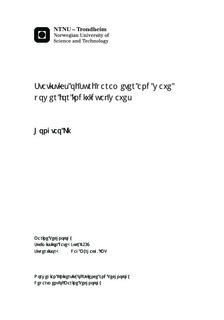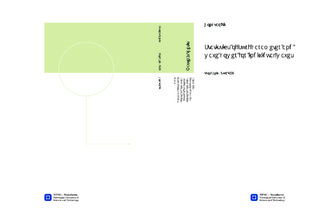| dc.description.abstract | In this thesis, the theoretical bivariate distribution of surf parameter and wave height is derived from a theoretical joint distribution of wave height and wave period based on narrow band approximation. Statistical properties of the derived bivariate probability density function are sensitive to the bandwidth parameter, which is reflected by appreciable spread in its contour. Based on theoretical solutions given by Matlab and Mable which also are verified by numerical calculations, the peak value of this distribution decreases exponentially. However the position of the peak value varies around characteristic wave height as bandwidth parameter increases in the range of interest. The resultant conditional distribution of surf parameter given small wave height is rather broad-banded.By employing same bandwidth parameter and dimensionless quantities, the derived theoretical probability model of surf parameter and wave height is compared with best-fit parametric probability model to data from Norwegian Continental Shelf. It is found that the two do not compare well with each other but give same statistical qualitative behaviour for statistical quantities of surf parameter such as conditional probability, expected value and variance. Resultant probabilities of four breakers also display same variation pattern for the two models.During the recent two decades the interest of green energy has increased, and wave energy is among the area of interest. Due to the necessity to assess the appropriateness of a wave power farm, there is an urgent need for reliable statistical models to give credible predication of expected wave power in the field of interest. Hence, a theoretical bivariate distribution of wave power andwave height aswell aswave power and wave period is compared with that of parametric probability model based on the same data for developing parametric probability model of surf parameter and wave height.By pursuing same methodology for investigation of statistical properties of theoretical distribution of surf parameter, it is shown that singularities appear in both theoretical distributions for wave power. In comparison with parametric probability model for wave power, it is shown that the marginal distribution of wave power is in good agreement. Contour plots of two models show that the theoretical model is much more broad banded. The computed conditional expected value and standard deviation of wave power given wave height from two models show almost same increasing trend and correspond to the interpretation of the contour plots. Similarly, the two conditional characteristic quantities of wave power given wave period from two models both increase firstly then decrease with wave period. Several numerical integration methods, including trapezoidal, Simpson and Romberg method implemented by author, are applied to obtain credible result. Adaptive Gauss quadrature is comprehensively employed to carry out validation against unity for transformed theoretical probability model of surf parameter and wave power as well as for their marginal distributions and conditional distributions. Converge study has been conducted and results are presented either in figures or by tabulated values. | nb_NO |

